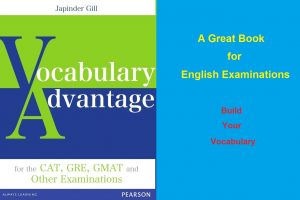5 اشتباه رایج در زبان انگلیسی!

5 اشتباه رایج در زبان انگلیسی!
5 اشتباه رایج در زبان انگلیسی!
1. It’s or Its
Example Mistake: The spider spun it’s web. Its a very beautiful web.
Tip: “Its,” without an apostrophe, is the possessive version of a pronoun. In the above example, we should use the possessive “its” to talk about the spider’s web, because the web belongs to the spider.
“It’s,” with an apostrophe, is a contraction of “it is” or “it has.” When talking about the beauty of the web, we’re saying that it is a very beautiful web. Therefore, we should use the contraction “it’s” instead of “its.”
So, if you’re not sure which spelling to use—”it’s” or “its”—try adding “it is” or “it has” to the sentence. If neither of those phrases works, then its is the word you’re looking for. For example, “the spider spun it is web” and “the spider spun it has web” do not make any sense. That’s why you should say “the spider spun its web.”
Correction: The spider spun its web. It’s a very beautiful web.
2. Subject-verb Agreement
Example Mistake: The list of items are on the desk.
Tip: In the above sentence, the list of items is one singular list. Therefore, we should not use “are.” We should use “is.”
Correction: The list of items is on the desk.
3. Gone or Went
Example Mistake: She had already went to the bathroom before they got in the car.
Tip: If you aren’t sure whether to use “gone” or “went,” remember that “gone” always needs an auxiliary verb before it. Auxiliary verbs include: has, have, had, is, am, are, was, were, be.
“Went” can’t have an auxiliary verb before it.
In the sentence above, we used “went” even though the auxiliary verb “had” is also present. Since the word “had” is there, we should use “gone” instead of “went.”
Correction: She had already gone to the bathroom before they got in the car.
4. Watch, Look, See
Example Mistake: Stop watching my private journal. / I look at the snow falling. / I don’t play tennis, but I look at them playing every day.
Tip: “See,” “look” and “watch” are often confused in meaning. However, they should be used in different situations. The difference between the three verbs can be explained in the following way:
- Look — to look at something directly.
- See — to see something that comes into our sight that we weren’t looking for.
- Watch — to look at something carefully, usually at something that’s moving.
So, we can “see” something even if we don’t want to, but we can only “look at” something on purpose.
Correction: Stop looking at my private journal. / I watch the snow falling. / I don’t play tennis, but I see them playing every day.
5. Pronoun Misplacement
Example Mistake: Take a deep breath through your nose and hold it.
Tip: The singular pronoun in the sentence should stand in for nouns, but here it’s unclear which noun it’s standing in for. The singular noun closest to the word “it” is “nose,” so it seems that “hold it” means to hold your nose. Instead, we want someone to hold their breath—not their nose.
When we use pronouns properly, we must easily understand which single noun the pronoun stands for. Make sure to be very clear. If it’s unclear, don’t use the pronoun or change the sentence!
Correction: Take a breath through your nose and hold your breath.
مطالب مرتبط:
گرامر پیشرفته: All right and alright
چطور از sequencers در زبان انگلیسی استفاده کنیم؟
Tag:academic writing, Grammar, IELTS, IELTS Writing, TOEFL, TOEFL Writing, Writing, آیلتس, رایتینگ, رایتینگ آیلتس, گرامر



